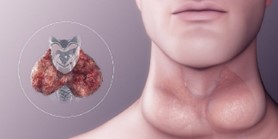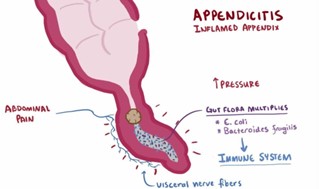A 46-year-old woman who was diagnosed with an upper respiratory infection yesterday and prescribed an antibiotic presents to the ED reporting. "l just don't feel right." The client has a history of diabetes mellitus type 2, hypertension, peripheral neuropathy, vascular disease, and retinopathy. On admission to a medical-surgical unit, the nurse implements a plan of care to prevent complications and maintain client safety while in the hospital.
Indicate which nursing action is appropriate to prevent complications of diabetes mellitus and maintain client safety while in the hospital.
Administer angiotensin-converting enzyme (ACE) inhibitor as prescribed.
Administer intravenous 5%D/NS at 200 mL/hr.
Administer I mg glucagon 1M PRN for blood glucose 70-90 mg/dL (3.9-5.0 mmol/L).
Ensure the path to the bathroom is well-lit.
Teach the client to rise slowly from the bed.
Coordinate meal-time insulin with food delivery and consumption.
Correct Answer : D,F,G
Option A is incorrect because administering an ACE inhibitor may be a part of the patient's regular medication regimen, but it is not specific to preventing complications of diabetes mellitus while in the hospital.
Option b is incorrect because administering intravenous fluids at a high rate may result in fluid overload, electrolyte imbalances, and other complications, which may not be appropriate for this patient.
Option c is incorrect because administering glucagon is not a preventative measure, but rather an intervention for treating hypoglycemia.
Option d is correct because ensuring a well-lit path to the bathroom is important for fall prevention, but it does not directly address the prevention of complications of diabetes mellitus.
Option e is incorrect because encouraging the client to drink sugar-free liquids is a general recommendation for maintaining hydration and may not be specific to preventing complications of diabetes mellitus.
Option f is correct because teaching the client to rise slowly from the bed is important for preventing orthostatic hypotension, but it does not directly address the prevention of complications of diabetes mellitus.
Option g is correct because Patients with diabetes mellitus are at risk for hypoglycemia when taking insulin or oral hypoglycemic agents. Proper coordination of meal-time insulin with food delivery and consumption can help prevent hypoglycemia or hyperglycemia. This includes ensuring that the patient receives insulin at the appropriate time in relation to meals and monitoring blood glucose levels regularly.
Nursing Test Bank
Naxlex Comprehensive Predictor Exams
Related Questions
Correct Answer is ["A","C","D"]
Explanation
Option b is not entirely correct because while bulk-forming laxatives contain fiber, they may not always be the best source of fiber, and their use should be individualized according to the patient's needs.
Option e is incorrect because while stimulants and saline laxatives can be effective for occasional constipation, they should not be used regularly or for an extended period without medical supervision as they can lead to dependence and other complications.

Correct Answer is D
Explanation
A decrease in the level of consciousness is a serious sign and could be an indication of worsening conditions. It is essential for the nurse to ensure that the patient's airway is open and clear, as a compromised airway can lead to hypoxia and a further decrease in consciousness. Therefore, maintaining a patent airway should be the nurse's priority action in this situation.
While monitoring blood pressure and restricting oral intake may be important interventions in certain situations, they are not the priority actions in this scenario. Administering SQ insulin may not be necessary for a patient with hypothyroidism and acute appendicitis.


Whether you are a student looking to ace your exams or a practicing nurse seeking to enhance your expertise , our nursing education contents will empower you with the confidence and competence to make a difference in the lives of patients and become a respected leader in the healthcare field.
Visit Naxlex, invest in your future and unlock endless possibilities with our unparalleled nursing education contents today
Report Wrong Answer on the Current Question
Do you disagree with the answer? If yes, what is your expected answer? Explain.
Kindly be descriptive with the issue you are facing.
